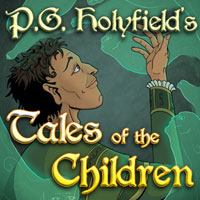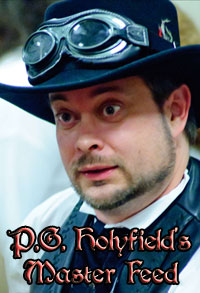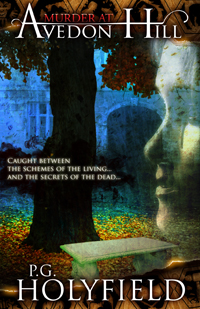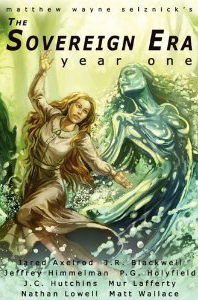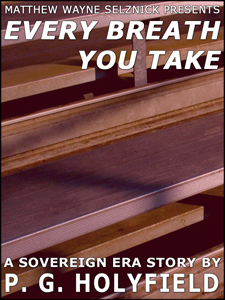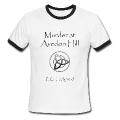The Children of Az
From the journal of Omal Lorian, scribe at the Library of Arien:
The Pantheon of Caern
Most of what is considered the Word of Az is what was spoken, written, or prophesized by Iberian (42 BI – 0 AI). Prior to Iberian, the races of Caern each had their own pantheon of gods.
In studying the myths of the Old Races (dwarves and elves) and the New (humans, halflings, gnomes, half-orcs, etc.), Iberian discovered too many similarities to ignore. All the races had myths around a mother or father god of creation. They all had myths around this Creation god’s Children. These Children represented some facet of the first parent deity (magic, war, trickery, love, for example). Each of these races also had oral histories built around stories of these Children, who often entered Caern as powerful (yet mortal) beings in order to affect the events of the world. They also shared similar stories of the near destruction of Caern during ancient times by these avatars.
Iberian proposed that in fact there is only one pantheon of Caern. He called this theory the Principle of Inclusion.
For example, if the Child of War was born into a dwarf-clan in the mountains of Inarra, he of course would not be born as an elf. Iberian used the collected stories of all the avatars to build a timeline, proving first to himself that no avatar of the same type (the Child of Destruction, for example) lived in Caern at the same time across multiple races. He developed a single pantheon that crossed all the races, naming the Creator god Az (the beginning and the end) and defining the ten different Children of Az.
Iberian was nearly killed numerous times because of his world-view. Most towns and/or regions had centers of worship dedicated to one particular avatar that lived near that place during his or her life. There were several well-organized human religions that recognized the Creator god and several of his Children, but they certainly did not mesh with the inclusive view proposed by Iberian. But Iberian was a powerful speaker, and the myths that he collected always seemed to support his theory. By the time of the War of Man, nearly all of Caern had accepted Iberian’s Principle of Inclusion.
When Elisia Llewellyn, the ancient elf-queen globally recognized as an avatar of the elf pantheon of gods, spoke out in support of Iberian’s world-view, Iberian’s place in history was confirmed. Following the end of the War of Man, a conference was held in Arien that canonized the pantheon. While it was a human-centric view of the gods, most races have accepted (in theory) the world view of Iberian.
Excerpt from the Conference of Representation, Arien, 2 BI
“The one god, Az, thought upon his existence and this thought created the universe. He breathed, and this breath created Caern. He spoke, and these words created the all life on Caern. He looked over his creation, and this glance created the river of magic that flows throughout Caern. He so loved Caern and his creation that he cried; from these tears his Children were born.”
From the collected stories of the races Iberian named the ten Children of Az:
 Iruna (Child of Nobility) – all races have stories of kings or (more often) queens that have claimed to be an avatar. While many of these may have been the result of the desire of a power greater than possessed, some (Elisia Llewellyn and Elbarria Rae, both elf-queens of the Whitemoon Elves) certainly have deserved this title.
Iruna (Child of Nobility) – all races have stories of kings or (more often) queens that have claimed to be an avatar. While many of these may have been the result of the desire of a power greater than possessed, some (Elisia Llewellyn and Elbarria Rae, both elf-queens of the Whitemoon Elves) certainly have deserved this title.
 Arjun (Child of Protection) – While most believe in the equality of all the Children of Az, some still adhere to the belief in the Cycles of Caern (the turning of the ages based on the actions of three gods – Az the Creator, Arjun the Protector, and Kalin the Destroyer). Because of this belief they place more importance on the avatar known as Arjun (since most do not desire the Destroyer to do what must be done to bring about the end of the current age.
Arjun (Child of Protection) – While most believe in the equality of all the Children of Az, some still adhere to the belief in the Cycles of Caern (the turning of the ages based on the actions of three gods – Az the Creator, Arjun the Protector, and Kalin the Destroyer). Because of this belief they place more importance on the avatar known as Arjun (since most do not desire the Destroyer to do what must be done to bring about the end of the current age.
(Editor’s Note: Though not listed in the accepted Canon, Thorn Twoblade (177 – 265 AI), founder of Thorn’s Way and the Aarronic Order, is thought by many to have been an avatar of Arjun).
 Kaelee (Child of Magic) – Magic flows across Caern as a river, and avatars of Kaelee usually deal with eras marking a resurgence of magic within the Land.
Kaelee (Child of Magic) – Magic flows across Caern as a river, and avatars of Kaelee usually deal with eras marking a resurgence of magic within the Land.
(Editor’s Note: Since the time of Iberian magic has been in decline. The Priests of Caern have promoted the idea that magic, other than the divine magic of a cleric, is an attack against nature. Sorcery is becoming a lost art, but there are cults in Caern eagerly awaiting the return of Kaelee, in the hopes of a new dawn of magic in the Land).
 Elai (Child of Stone) – During the Conference there was some who wanted to include avatars of Elai as avatars of Arjun. But for two reasons Elai was kept separate: 1. Arjun was always represented protection by action, while Elai represented strength and foundation through his/her sheer will. 2. There is one specific myth where avatars of Arjun (a human barbarian named Braeden Koss) and Elai (a dwarf named Wolden Orc-Blight) worked together during the Great War known as The Dark Times.
Elai (Child of Stone) – During the Conference there was some who wanted to include avatars of Elai as avatars of Arjun. But for two reasons Elai was kept separate: 1. Arjun was always represented protection by action, while Elai represented strength and foundation through his/her sheer will. 2. There is one specific myth where avatars of Arjun (a human barbarian named Braeden Koss) and Elai (a dwarf named Wolden Orc-Blight) worked together during the Great War known as The Dark Times.
 Doppin (Child of Trickery) – the favorite Child of Chaos; while many of the Children of Az enter Caern in
Doppin (Child of Trickery) – the favorite Child of Chaos; while many of the Children of Az enter Caern inorder to perform the will of Az, Doppin enters Caern in order to fulfill his own agenda, sometimes to the detriment of everyone around him.
 Balin (Child of Love) – The avatar representing Az’s capacity for love has appeared in Caern more often than any other Child of Az. While other Children choose to enter Caern at specific points in history where they are needed (or not needed as the case may be), Balin’s love for the living causes her (or him, in many cases) to enter Caern simply to take part in the world. Stories of Balin are mixture of love, lust, loss, sacrifice, and friendship.
Balin (Child of Love) – The avatar representing Az’s capacity for love has appeared in Caern more often than any other Child of Az. While other Children choose to enter Caern at specific points in history where they are needed (or not needed as the case may be), Balin’s love for the living causes her (or him, in many cases) to enter Caern simply to take part in the world. Stories of Balin are mixture of love, lust, loss, sacrifice, and friendship.
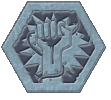 Treygh (Child of Pain) – also known as the monster; while not evil, Treygh usually takes on the form of the disfigured, the shunned, or those not deemed worthy by the other Children. As a result Treygh is most popular in Inarra, the mountainous province to the north that is generally less respected than the provinces of Yew and Grozh. Also most orc-bloods that survived the last Great War and now live in Caern hold a special place in their hearts for Treygh.
Treygh (Child of Pain) – also known as the monster; while not evil, Treygh usually takes on the form of the disfigured, the shunned, or those not deemed worthy by the other Children. As a result Treygh is most popular in Inarra, the mountainous province to the north that is generally less respected than the provinces of Yew and Grozh. Also most orc-bloods that survived the last Great War and now live in Caern hold a special place in their hearts for Treygh.
 Ursala (Child of Nature) – Like Elai, a great deal of thought went into determining which myths were Ursala and which were avatars of Arjun, the protector. While Arjun can be seen as the protector of the Caern’s peoples, Ursala is mostly identified with the land itself, especially the forests and rivers of Caern. Ursala feels the pain of the animal world much stronger than the other Children, even on the immortal plane.
Ursala (Child of Nature) – Like Elai, a great deal of thought went into determining which myths were Ursala and which were avatars of Arjun, the protector. While Arjun can be seen as the protector of the Caern’s peoples, Ursala is mostly identified with the land itself, especially the forests and rivers of Caern. Ursala feels the pain of the animal world much stronger than the other Children, even on the immortal plane.
Like Balin, Ursala requests to live on Caern time and time again. Unlike most of the other Children Ursala is content to never experience an ‘epiphany’ during her time on Caern (see below for more information on the Epiphany of the Children ). Her powers are such that she does much of her good works without understanding her true nature. In fact, the few times she learned of her nature during her life she used her powers mainly against those who have caused pain to the Land.
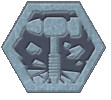 Kalin (Child of Destruction) – while the favorite of the evil-hearted, most races have similar stories of Kalin as a pawn in some grand game, causing the Cycles of Caern to keep turning ever onward.
Kalin (Child of Destruction) – while the favorite of the evil-hearted, most races have similar stories of Kalin as a pawn in some grand game, causing the Cycles of Caern to keep turning ever onward.
One myth of Kalin told by Dwarf-king Muran at the Conference: “His name was Marteen Orc-Renderer. He lived at the end of the Third Age of Lloy, some ten thousand years ago. The unknowing avatar of Kalin was a dwarven barbarian clan-leader, a leader that had brought together over twenty clans of both dwarves and humans for the purpose of driving back an orc incursion that had been increasing in intensity for over forty years.
Now that we understand the truth of things, another Child, most likely Doppin, came to Caern and one of his sisters, most likely Balin, against her better judgment gave Doppin knowledge of his divine nature. Doppin, a human, aged quickly enough and joined Marteen and proved himself worthy as a confidant and general.
At the height of the most important battle between Marteen’s clans and the orcs, Doppin used his powers to trigger Kalin’s ‘epiphany’. Kalin had only wanted to live on Caern without his powers and help the dwarven clans he had watched from the immortal plane – but with his immortal powers unleashed Kalin unintentionally destroyed most of the combatants on both sides, marking the end of the Third Age of Lloy and bringing about the rise of the Elven nation of Silvermoon.”
Both Doppin and Kalin cannot deny their nature; both do their part to ensure that ages pass and that Caern moves ever forward.
 Artus (Child of War) – While Kalin can take on the form of a warrior, his purpose is to bring about the destruction of an age. Artus however appears in many myths whenever a warrior is needed by a certain race. Artus and Arjun are also similar, as Arjun is always a man (or woman) of action. But Artus’s only purpose is to fight against those that threaten Caern, while many of Arjun’s avatars handled situations through diplomacy and guile. When Artus lives on Caern he is drawn to battle, even if he never receives an epiphany’. Tales of Artus after realizing his divine nature can be found in the myths of every race, even gnomes.(Editor’s Note: Many feel that Theuroik Ironblade was an avatar of Artus, the warrior. Given the relationship between Theuroik and Iberian, the Priests of Caern have never named Theuroik as an incarnation of Artus.)
Artus (Child of War) – While Kalin can take on the form of a warrior, his purpose is to bring about the destruction of an age. Artus however appears in many myths whenever a warrior is needed by a certain race. Artus and Arjun are also similar, as Arjun is always a man (or woman) of action. But Artus’s only purpose is to fight against those that threaten Caern, while many of Arjun’s avatars handled situations through diplomacy and guile. When Artus lives on Caern he is drawn to battle, even if he never receives an epiphany’. Tales of Artus after realizing his divine nature can be found in the myths of every race, even gnomes.(Editor’s Note: Many feel that Theuroik Ironblade was an avatar of Artus, the warrior. Given the relationship between Theuroik and Iberian, the Priests of Caern have never named Theuroik as an incarnation of Artus.)
For more on this subject, please continue to The Constraints





 Author, Podcaster, Father - P.G. Holyfield's first novel, Murder at Avedon Hill, was published by Dragon Moon Press in May of 2010. He passed away on August 20, 2014 in his home, surrounded by family and friends.
Author, Podcaster, Father - P.G. Holyfield's first novel, Murder at Avedon Hill, was published by Dragon Moon Press in May of 2010. He passed away on August 20, 2014 in his home, surrounded by family and friends.
